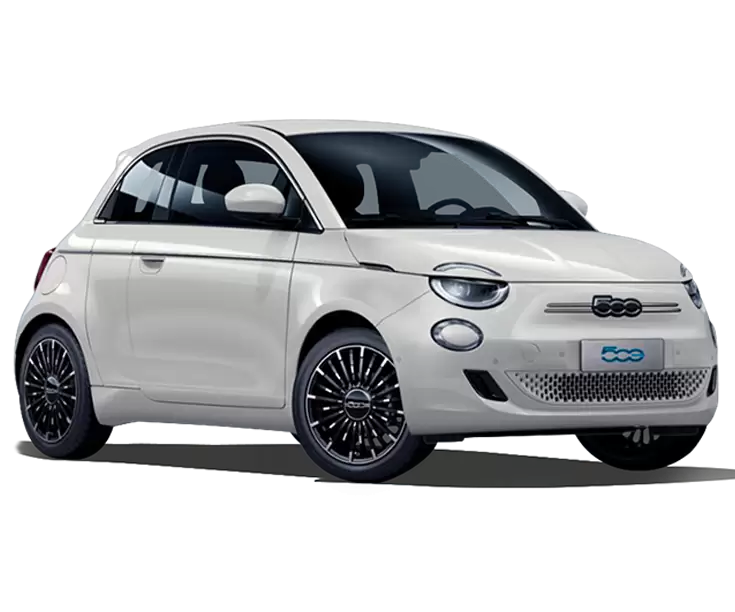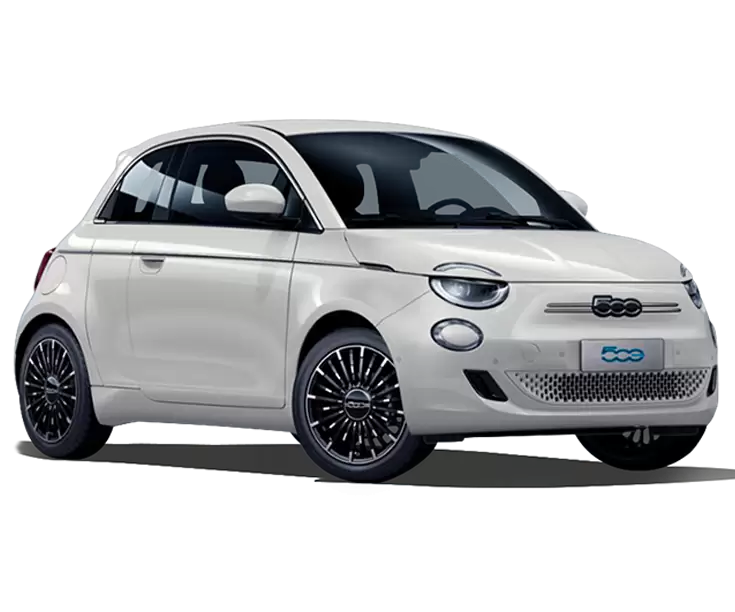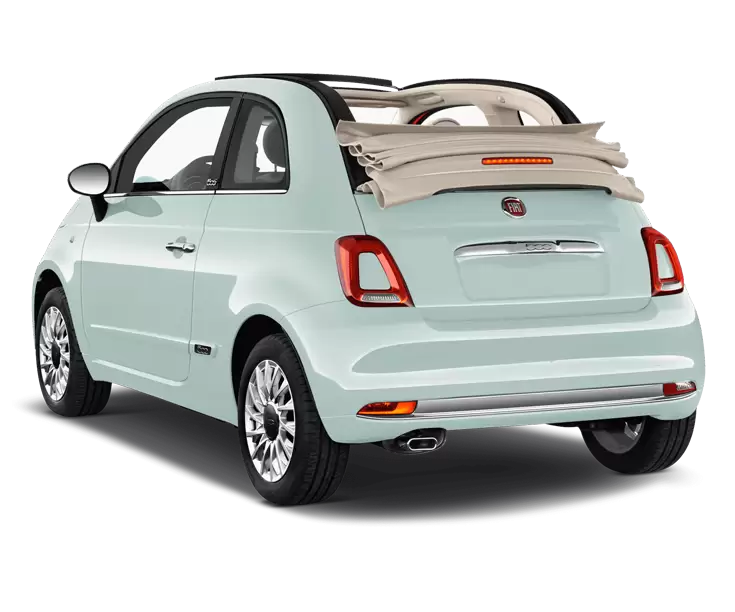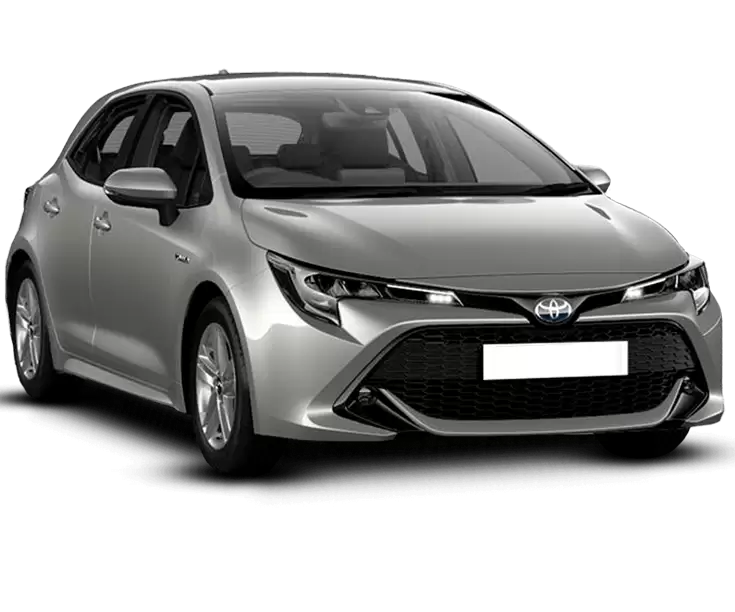The differences between an electric and a hybrid car
Electric and hybrid vehicles can be split into three categories: fully electric, hybrid, and hybrid plug-in.
Fully electric cars run exclusively on energy stored within their batteries. The driving range of these battery-powered vehicles varies from model to model.
Hybrid electric vehicles have two engines. One is a combustion engine that can be powered by petrol or diesel, and the other power train is an electric engine. Hybrid cars use less fuel than a conventional car, but cannot be classed as ‘zero emission’ like a fully electric vehicle.
Electric car hire in the Canary Islands
Fully electric cars are completely powered by their electric power unit and don’t emit any polluting gases into the atmosphere. As soon as you get behind the wheel of an Electric Vehicle (EV) you’ll feel the power of its emission-free engine and experience the pleasure of driving in silence. Choose an electric hire car with TopCar, such as the Fiat 500 Electric, and enjoy a peaceful drive with zero emissions.
Hybrid car rental in the Canary Islands
Hybrid vehicles are the perfect combination between a conventional car and an electric vehicle. Hybrids have two engines - one combustion and one electric, and utilise a built-in self-recharging battery while out on the road.
There are two types of hybrid cars: Electric Hybrid Vehicles (HEV) and Plug-In Hybrid Electric Vehicles (PHEV). Electric Hybrid Vehicles recharge themselves while driving, whereas plug-ins recharge partially while driving, they need to be plugged into a power source to recharge fully. One of the main advantages of a Plug-In Hybrid Vehicle is that their battery capacity is larger than a HEV, allowing them to be driven in electric mode for around 50-60 kilometres, or approximately 30-37 miles. PHEVs are ideal if you want to explore urban areas on the road.
TopCar offers a variety of hybrid and plug-in hybrid rental car options, including the Renault Captur E-Tech Plug-In Hybrid and the Toyota Corolla Hybrid, allowing you to enjoy more and pollute less while driving in the Canary Islands.
There are plenty of electric vehicle charging points throughout the Canary Islands.
Zoom in on this map, created by different associations of EV users, to see the network of charging points available in each of the Canary Islands and find your nearest charging location.
Charging times may vary depending on different factors, such as the power capacity of the charging point, the type of cable used and the specific characteristics of the electric vehicle. In some cases, it can take only one hour to fully charge, while in other cases it can take several hours.
You’ll find a fast charging cable in the boot of your electric car, or alternatively, a cable with a two-pin Schuko plug suitable for home charging with a Spanish domestic plug socket / power outlet. To be able to charge your electric vehicle at a public charging point, you will probably need an RFID smart card and be registered with the provider in question.
At TopCar we make it easy to return electric vehicles, allowing them to be returned with a lower charge than the level initially provided. Unlike regular fuel vehicles in which it would have to be returned with the same amount of fuel as it was delivered (same-same policy or fair rate). This will save the customer a significant amount of time and money.
This setting is a specific driving mode which increases regenerative braking when the driver takes their foot off the accelerator pedal. We recommend using B Mode if you want to make the most out of energy harvesting and extend your EV rental vehicle’s driving range.





